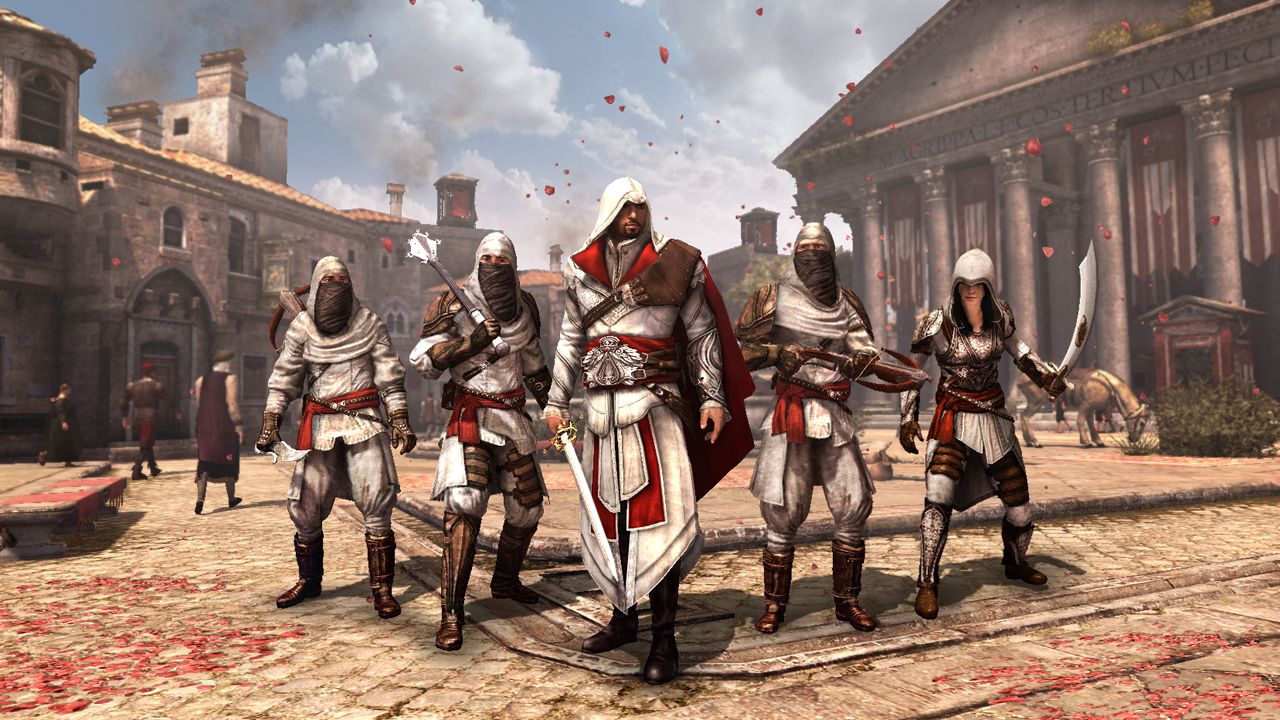Assassin’s Creed IV Black Flag has recently been made available for free to Xbox 360 owners with an Xbox Live membership as part of the Games With Gold program. This means that gamers can get their hands on what is widely regarded as the second best, or even by some the best, game in the series.
The best Assassin’s Creed game is largely considered to be the second, so what is it about Assassin’s Creed II and Assassin’s Creed IV Black Flag that makes them stand out in a series full of similar efforts? Well, that’s what we’re here to discuss, but I also want to point how how Ubisoft can reinvigorate the franchise after the catastrophe that was Assassin’s Creed Unity.

For now, let’s ignore all of the Desmond/Animus aspects of the games; forget that they ever happened. So what is it that makes the worlds of Assassin’s Creed II and IV so enjoyable to roam around in? In short, it’s atmosphere.
Many gamers will remember running around Italy in Assassin’s Creed II for the first time, consuming the sights and sounds that have been crafted for you. The great thing about this is that it was believable. The mumbling of Italians set to the oft-sundown backdrop created a feeling like none other. Assassin’s Creed II did a wonderful job of making you feel like you were really there; in Venice and in Florence. Sometimes it’s hard to put a finger on how it’s done, but everything just seemed right, whether it be the characters such as Da Vinci who helped to portray the attitudes and emotions of the people or the grand architecture of the cities, it all looked exactly how you’d imagine 16th century Italy to look.
The sub-sequels – Assassin’s Creed Brotherhood and Assassin’s Creed Revelations – helped to build on this element of game design, and whilst they attempted to integrate a couple of new ideas, few of them caught on and the two games ended up being considered as extremely similar to Assassin’s Creed II, thus they did not take the series in a new direction.

That’s not to say that the series needed to head in a new direction to do what it does best. When Assassin’s Creed is at its best is when players are running around ancient areas, learning about the past and becoming more knowledgeable on the setting all the while. Perhaps it’s the language, the culture or something else; either way, Assassin’s Creed has even been used in schools to help teach History lessons, proving what it can really achieve when it focuses on its strong points.
The same sort of compliments can also be applied to Black Flag. When the series needed to feel fresh, it didn’t need to drastically change the gameplay mechanics, it merely required a new piece of the past to play around in, and Black Flag offers just that. Roaming around the Caribbean and the open seas, Black Flag really makes you feel like you’re a pirate in the 18th century. It’s the small touches that aid in this regard, such as your crew singing shanties that can be collected throughout the game when they are aboard the Jackdaw, or the gulls crying as they fly through the beautiful blue sky. Even more impressive is the seamless transition from sailing to swimming to running on-foot. There’s something extraordinary about sailing to a small island, only to dive off the ship and swim the the shore with zero load times that really adds to the authenticity. Searching the numerous small islands for chests and treasure maps or hunting iguanas and other creatures to upgrade your gear; it all contributes to making the experience feel that much more real.

With Assassin’s Creed III and, to some extent, Assassin’s Creed Unity, Ubisoft tried to do too much. By being too ambitious in terms of story and gameplay, the developers forgot what made the series so good in the first place – what gave it its identity. The setting for Assassin’s Creed III simply wasn’t very interesting and the story was far too political to get on board with for newcomers. Don’t get me wrong, Assassin’s Creed III was not a bad game, but for me the gameplay alone could not hold up what was an otherwise okay experience.
Again, whilst Assassin’s Creed Unity hoped to teach us of the shenanigans of the French Revolution and 18th century Paris, a push to release the game on time meant that it shipped with frankly a unAnimus unanimous amount of bugs and glitches that would later be patched, by which point it was too late. The damage had been done and the believability just wasn’t there; how could it be when NPC’s are falling through the floor and key facial features such as skin are missing in cutscenes? I think the developers had the right idea with Unity as attractions such as the Notre Dame had been recreated with painstaking detail, but technically the execution was all over the place, likely due to time constraints which weren’t realistic.
So, here’s hoping that the next game in the series – Assassin’s Creed Victory – can take the foundation that Unity was built on and really iron out the kinks so that the launch is more stable, thus allowing us to enjoy the sights and sounds of Victorian London just like we did in Renaissance Italy and the Caribbean.


